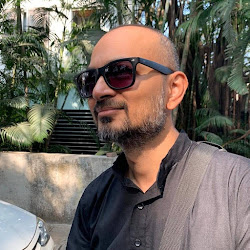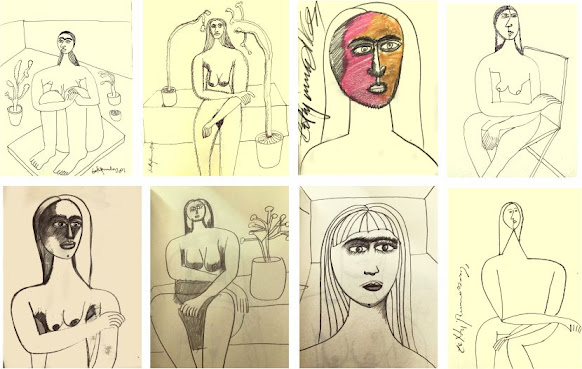----
Nude, another way to describe a bare body, a body exposed but having a warmth of skin, which starts in womb and gives sense of our existence.In a wider way if we visualise, we all are made up of same ingredients but the recipe is slightly distinctive. We all are an amalgamation of bones, muscles, flesh and so, with a huge sprinkle of emotions and desires. Having bare body as a base which is owned by every soul, some still feel apprehensive while glancing at one. Though for some, it is an instrument of self-realisations, self-expression and a profound source to enchant delicacy.
 | |
From very beginning of human civilisations, we have witnessed nude human figures, especially female idols, that happened to be considered as goddess of fertility, nature and well being.The temples of khajuraho in India, are the perfect examples to depict, how nude art played a part in religious chapters. It’s erotic sculptures seamlessly blends with the traditional and mythical characters.Slowly and steadily our eyes started to praise what is beneath the clothes, and many portraits, live drawings, sketches were drawn where nudity performed a gigantic role.
The Nude: a Study in Ideal Form by Lord kenneth clark, first published in 1956. The introductory chapter makes a distinction between the naked body and the nude. Clark states that to be naked is to be deprived of clothes, and implies embarrassment and shame, while a nude, as a work of art, has no such connotations. The era was initiated where a subtle line was marked between nude and naked. Now the depiction of human body was shown in more realistic and natural way rather than glorying it as of goddesses and nymphs. Pubic hair, marks were naturally shown.
The nude maja (1797) by Goya, 1815 drew the attention of the Spanish Inquisitions. Where in an elite society a female was shown nude and posing bare directly. Got alot of criticism in first place but was appreciated for it’s natural appeal later. Not just females but males have also been shown nude several times, the most appropriate example is the David by Michelangelo, 1504.
 |
| Amit Srivastava |
Apart from the nude enthusiasts, many had and are still hostile to it. During the baroque and renaissance eras, the nude sculptures were given a shade of leaf on the private genitals, as they were not accepted bare. Which is still continued by some in present generation. Indian artists could not reside away from the alluring beauty of nudes, they kept their thoughts foremost and drew some of the most influential paintings of era, F.N. Souza’s erotic and sexual art displays nudity as regime of living, giving it a modern aroma. While Raja ravi varma’s and Amrita shergill’s way to present nudes has subtle and realistic approach.
Akbar padamsee added another way to show nudes while playing with light and shadow and artists like Bhupen khakkar indulged nudes in contemporary and conceptual ways. In a state of nature, nude, is a way to acknowledge nature’s most significant formation, the body. Fifteen impressive artists are exhibiting their works to portray the aesthetic appeal, foundation of living and their wider vision of accepting being nude and visualising nudes.
Nude, an ungarmented body is the essence of nature, it shows the value of being alive, of being covered in a seamless skin. It has a power to feel, touch, cherish and excite. Nude is a way of appreciation and not apprehension.
 |
| by Sanchita Sharma |

















